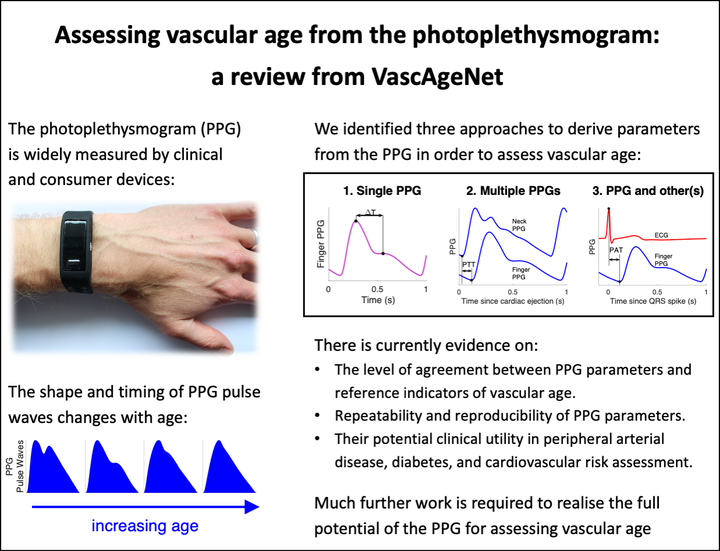Assessing hemodynamics from the photoplethysmogram to gain insights into vascular age: A review from VascAgeNet
Abstract
The photoplethysmogram (PPG) signal is widely measured by clinical and consumer devices, and it is emerging as a potential tool for assessing vascular age. The shape and timing of the PPG pulse wave are both influenced by normal vascular ageing, changes in arterial stiffness and blood pressure, and atherosclerosis. This review summarises research into assessing vascular age from the PPG. Three categories of approaches are described: (i) those which use a single PPG signal (based on pulse wave analysis); (ii) those which use multiple PPG signals (such as pulse transit time measurement); and (iii) those which use PPG and other signals (such as pulse arrival time measurement). Evidence is then presented on the performance, repeatability and reproducibility, and clinical utility of PPG-derived parameters of vascular age. Finally, the review outlines key directions for future research to realise the full potential of photoplethysmography for assessing vascular age.
See here for further details of VascAgeNet and the PPG group which conducted this work.
